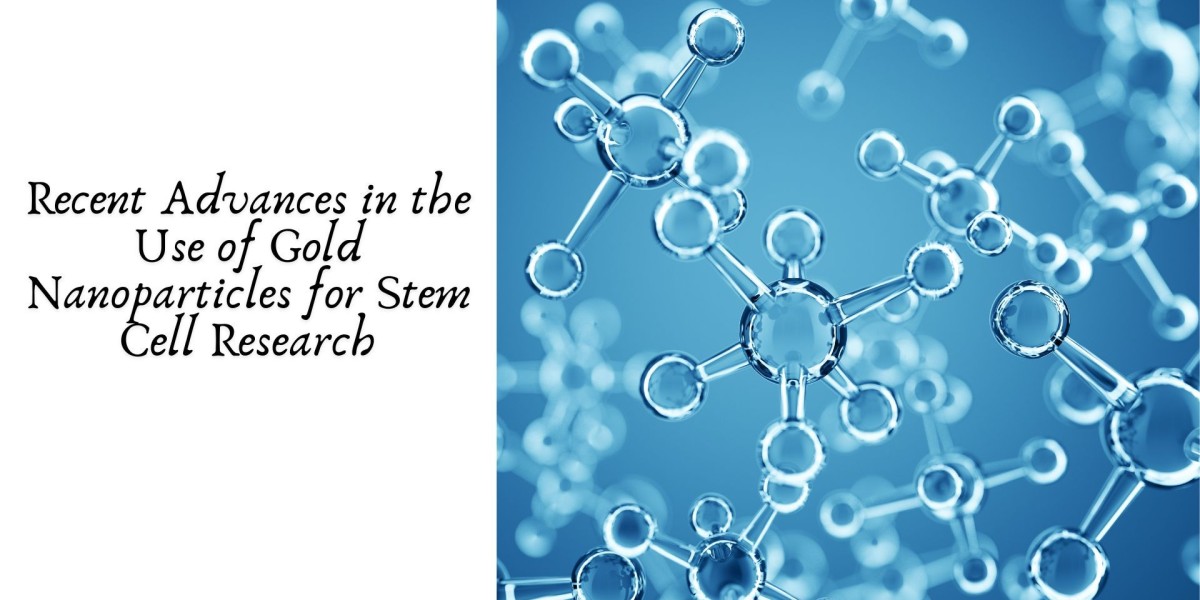Gold nanoparticles (AuNPs) have gained significant attention in recent years, particularly in the field of stem cell research. These tiny particles, ranging from 1 to 100 nanometers in diameter, are heralded for their unique physical and chemical properties, including their biocompatibility, surface versatility, and ability to interact with biomolecules. Researchers have been exploring innovative ways to use AuNPs to enhance stem cell applications, with a focus on regenerative medicine, diagnostics, and therapeutic interventions. This article delves into the recent advances in the use of gold nanoparticles for stem cell research, highlighting their role in cellular differentiation, gene delivery, and bioimaging.
Gold Nanoparticles: A Game-Changer in Stem Cell Research
The unique optical and electronic properties of AuNPs make them ideal tools for a variety of applications in biology and medicine. Their high surface area-to-volume ratio allows for easy functionalization with a range of biomolecules, including DNA, peptides, and antibodies, making them highly versatile in stem cell research. In recent years, AuNPs have emerged as a powerful platform for studying and controlling stem cell behavior, particularly in the fields of regenerative medicine and tissue engineering.
Enhancing Stem Cell Differentiation
One of the most promising applications of gold nanoparticles in stem cell research is their ability to influence cellular differentiation. Stem cells are undifferentiated cells that have the potential to develop into various specialized cell types, and directing their differentiation is crucial for successful tissue regeneration.
Recent studies have demonstrated that AuNPs can serve as differentiation-inducing agents for stem cells. For example, AuNPs functionalized with specific growth factors or peptides can act as scaffolds, creating a microenvironment that promotes the differentiation of mesenchymal stem cells (MSCs) into osteoblasts or chondrocytes. Researchers have found that the controlled release of growth factors from AuNPs provides a more sustained and effective differentiation process compared to conventional methods.
Additionally, AuNPs have been used to promote neuronal differentiation of stem cells, which is a significant advancement for neural tissue engineering. The conductive properties of gold are advantageous in this regard, as they can facilitate the formation of neuronal networks by providing electrical cues that guide stem cell differentiation into neurons. This approach is paving the way for future treatments for neurodegenerative disorders such as Parkinson's and Alzheimer's diseases.
Gold Nanoparticles as Gene Delivery Vehicles
Gene delivery is a critical component of stem cell research, as it allows scientists to manipulate the genetic makeup of stem cells to achieve desired therapeutic outcomes. Traditionally, viral vectors have been used for gene delivery, but they come with safety concerns, such as immunogenicity and potential insertional mutagenesis. Gold nanoparticles offer a safer, non-viral alternative for gene delivery.
Recent advances have shown that AuNPs can be functionalized with nucleic acids to effectively deliver genes into stem cells. The high surface area of AuNPs allows for the attachment of large quantities of DNA or RNA, and their small size facilitates cellular uptake. Moreover, the functionalization of AuNPs with polyethyleneimine (PEI) or other cationic polymers enhances their ability to interact with negatively charged cell membranes, improving transfection efficiency.
One notable advance is the use of AuNP-based gene delivery to enhance the therapeutic potential of induced pluripotent stem cells (iPSCs). Researchers have successfully used AuNPs to deliver transcription factors into adult somatic cells, reprogramming them into iPSCs. This technology holds great promise for patient-specific regenerative therapies, as iPSCs can differentiate into any cell type and potentially repair damaged tissues.
Bioimaging and Monitoring Stem Cell Behavior
Another significant advancement in the use of gold nanoparticles for stem cell research is their role in bioimaging. Tracking and monitoring stem cells after transplantation is crucial for understanding their behavior, migration, and integration into host tissues. Gold nanoparticles, with their unique optical properties, provide a non-invasive method for imaging stem cells.
AuNPs exhibit strong surface plasmon resonance, which can be harnessed for various imaging techniques, including optical coherence tomography (OCT), photoacoustic imaging, and dark-field microscopy. Recent studies have demonstrated that stem cells labeled with AuNPs can be visualized in real-time, allowing researchers to track their distribution, proliferation, and differentiation in vivo. This capability is particularly valuable for evaluating the success of stem cell therapies in preclinical models.
Furthermore, gold nanoparticles can be combined with other imaging agents, such as fluorophores or magnetic nanoparticles, to create multimodal imaging platforms. These platforms enable researchers to obtain complementary information about stem cell behavior using different imaging modalities, enhancing the overall understanding of stem cell dynamics in a complex biological environment.
Gold Nanoparticles in Tissue Engineering
Gold nanoparticles are also playing a crucial role in tissue engineering, particularly as part of scaffold systems that support stem cell growth and differentiation. Tissue engineering aims to create functional tissue constructs that can replace or repair damaged tissues, and the development of suitable scaffolds is a key challenge in this field.
Recent advances have focused on incorporating AuNPs into biomaterial scaffolds to enhance their mechanical properties and provide biochemical cues to stem cells. For instance, gold-coated nanofibers have been shown to promote the adhesion, proliferation, and differentiation of stem cells into bone-forming osteoblasts. The electrical conductivity of gold also makes it an attractive component for cardiac and neural tissue engineering, where electrical signals play a crucial role in tissue function.
In cardiac tissue engineering, AuNP-incorporated scaffolds have been used to create patches that support the differentiation of stem cells into cardiomyocytes, the cells responsible for heart muscle contraction. These patches not only provide mechanical support but also enhance electrical conductivity, improving the functionality of engineered cardiac tissue.
Challenges and Future Directions
While gold nanoparticles have demonstrated great potential in stem cell research, several challenges remain. One of the primary concerns is the potential cytotoxicity of AuNPs, which depends on factors such as particle size, shape, concentration, and surface coating. Understanding and optimizing these parameters is essential for ensuring the safety of AuNP-based therapies.
Another challenge is the scalability of AuNP production and their functionalization for specific applications. Large-scale synthesis of AuNPs with consistent size and shape is necessary for clinical translation, and ongoing research is focused on developing cost-effective and reproducible methods for AuNP synthesis.
Despite these challenges, the future of gold nanoparticles in stem cell research looks promising. Advances in nanotechnology and material science are expected to lead to the development of more sophisticated AuNP-based platforms that can precisely control stem cell fate and enhance the efficacy of regenerative therapies. Moreover, the combination of gold nanoparticles with other emerging technologies, such as CRISPR gene editing and 3D bioprinting, could further revolutionize the field of stem cell research.
Conclusion
Gold nanoparticles are transforming stem cell research by providing innovative solutions for stem cell differentiation, gene delivery, bioimaging, and tissue engineering. Their unique properties, including biocompatibility, surface versatility, and optical characteristics, make them highly valuable tools for advancing regenerative medicine. Recent advances in the use of AuNPs have brought us closer to realizing the full potential of stem cell therapies for treating a wide range of diseases and injuries.
As research continues to address the challenges associated with AuNPs, such as cytotoxicity and scalability, we can expect even more groundbreaking developments in the field. The integration of gold nanoparticles into stem cell research not only enhances our understanding of stem cell biology but also paves the way for more effective and personalized regenerative therapies in the future.


![Canna Plus CBD Gummies FR, BE, LU & CH (France) Avis [Mise à jour 2024]](https://biiut.com/upload/photos/2024/10/QSr4TwsPIIsum82p3YH5_04_73916413b894bfa861ee563680ff9a13_image.jpg)
